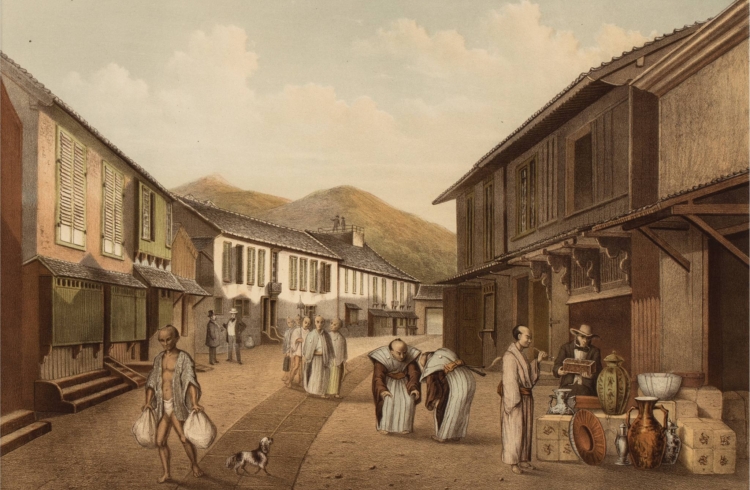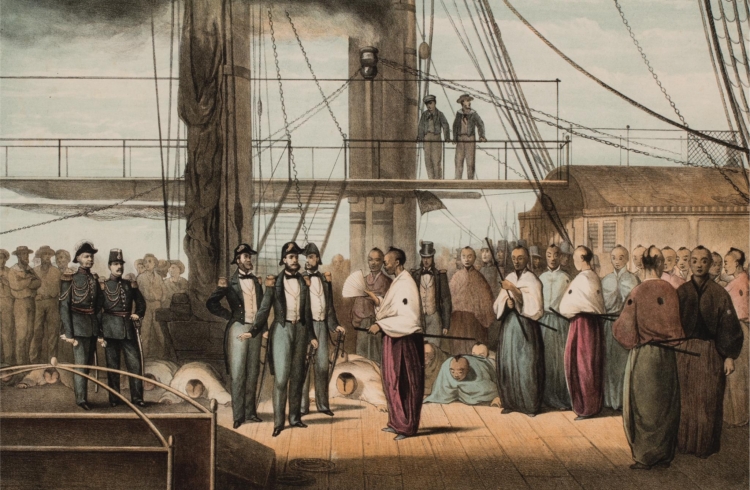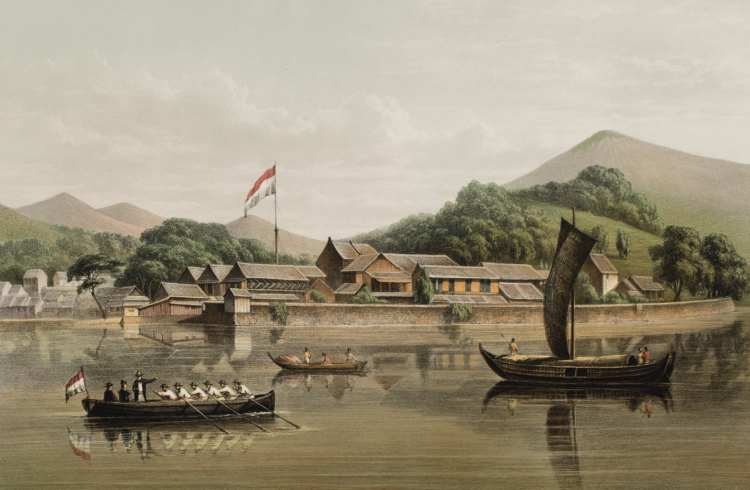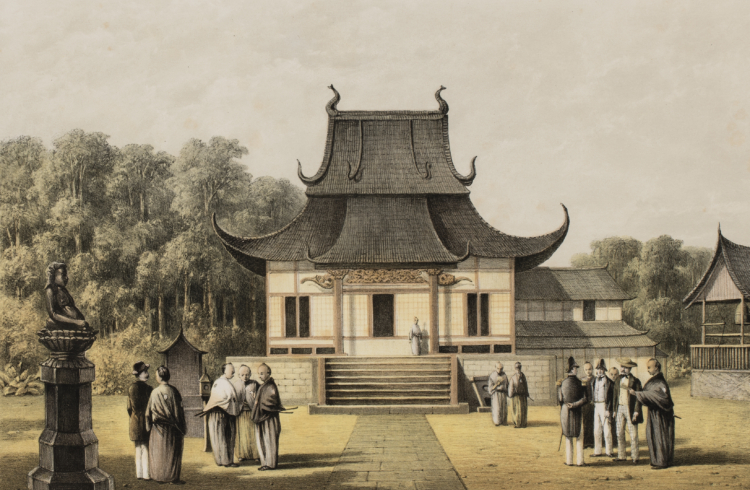- Exhibitions
- Archive
- Turbulent Times: Dutch-Japanese relations and the last days of the Samurai (1853-1867)
Exhibition
Turbulent Times: Dutch-Japanese relations and the last days of the Samurai (1853-1867)
15 March – 7 July 2024
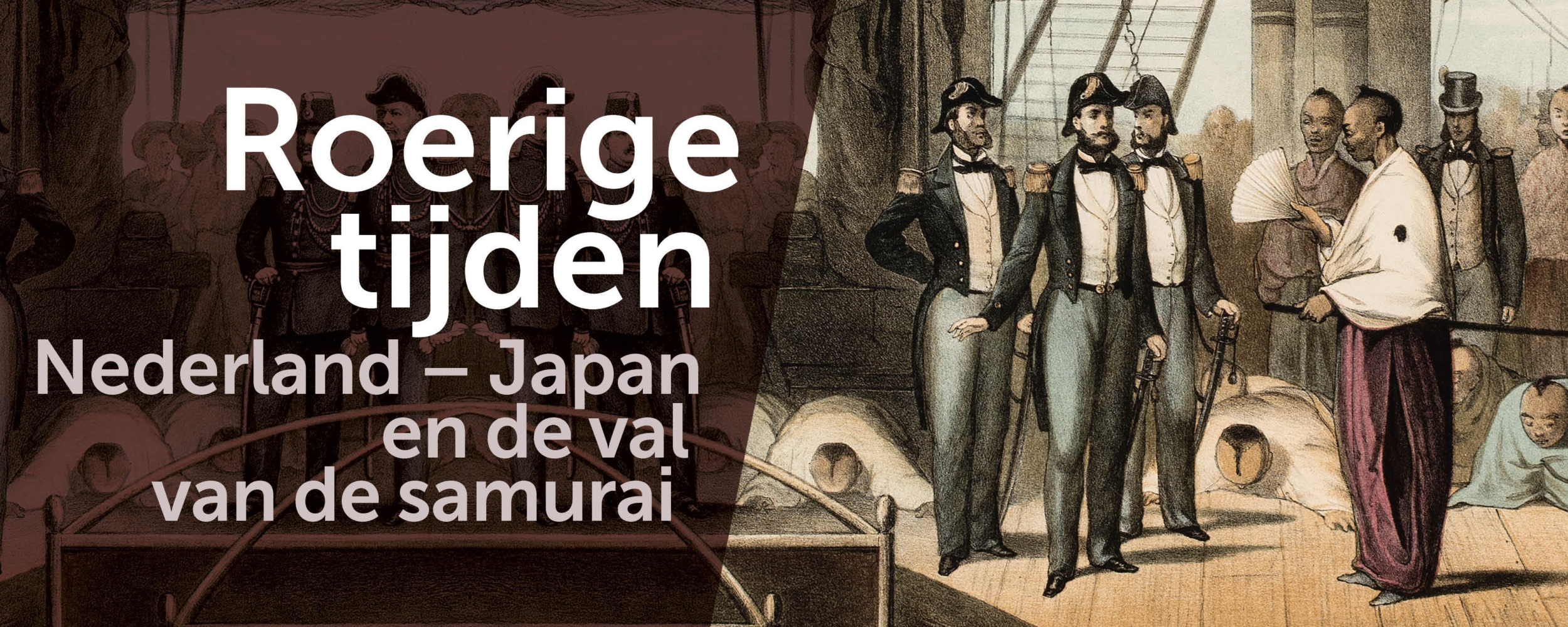
Turbulent Times describes how the Dutch and Japanese navigated together through the mid-19th century: a time of great unrest filled with political and scientific changes in which both countries assumed a new role on the world stage. A unique aspect of this exhibition is the display of Souvenir du Japon, a rare set of lithographs with views of Deshima, Nagasaki, and surroundings.
Experience 'Turbulent Times' again! Click the button below.
Decorative screens, swords, prints, paintings, photographs, maps, and maritime objects make up the seven themes that reflect the relations between the Netherlands and Japan in the period between 1853 and 1867. The diversity of the objects, from 18 museums and collections, highlights versatility of this exhibition.
Soembing
A source of inspiration for this unique exhibition is: Souvenir du Japon, a complete set of twenty colour lithography that were donated to Japan Museum SieboldHuis in 2020. These prints are based on drawings and watercolours that Johan Maurits Count van Lynden made during the Dutch Diplomatic Mission to Japan in 1855. During this mission, the Netherlands donated the steamship the ‘Soembing’ to Japan. This marked the beginning of a modern Japanese naval fleet. This exhibition takes you back to this important event by means of various Japanese prints, photos, and a scale model of the ‘Soembing’.
Gifts
One of the seven themes of the exhibition is ‘gifts from the shogun’. As thanks for the gift of the ship the ‘Soembing’, Japan gave the Netherlands an impressive collection of weapons and utensils. A few examples on display are spectacular swords and a magnificent two-piece decorative screen with plum blossoms. There is also a 19th century samurai armour, hand made by Myōchin Munekane; a masterpiece made with costly gold brocade.

Myōchin Munekane, ca. 1855, RV-360-7749. Wereldmuseum Collection. R: Tantō (dagger) en kogatana (pocket knife) ca. 1869. G.C.C. Pels Rijcken Collection.
Major changes
Other themes in the exhibition are: The Opening of Japan; the Dutch Mission of 1855; The establishment of a fleet; Treaty Port Yokohama; Exchange; Conflict and the fall of the samurai. These themes address the major changes that took place in Japan between 1853 and 1867. After the opening in 1853, western ideas and knowledge flooded in. These had a major influence on the political playing field. On the one hand the samurai warriors protested the presence of Westerners, whereas on the other had there was an eagerness to follow the West and to modernize as quickly as possible.
Dutch knowledge
The Dutch took advantage of the new political situation in Japan. After two hundred years they had lost their trade monopoly and were therefore in search of new ways to remain relevant to Japan. The Netherlands began to help establish a modern Japanese naval power. Warships and knowledge on seafaring were offered. This aspect of Dutch knowledge is featured with the aid of maps, drawings and photographs.
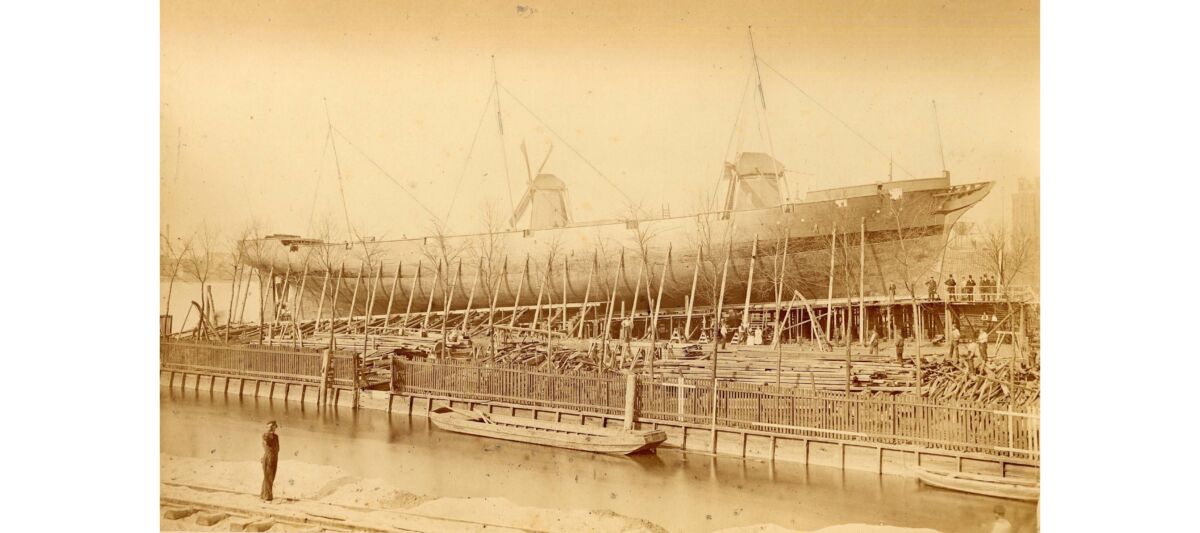
Nisshin under construction, ca. 1868-1869, FN000598. ABN AMRO Art & Heritage Collection.
A new beginning
The Edo-period (1603-1868) is known for its conservatism and stability. This in sharp contrast with the Meiji-period (1868-1912) that followed, in which society had to change and modernize quickly. The turbulent times at the end of the Edo-period (1853-1867) in which this upheaval took place are often forgotten. The exhibition highlights this period in which Japan re-shapes itself including the diplomatic relations with the Netherlands.
This exhibition has been made possible in part by: The Ministry of Education, Culture and Science, the municipality of Leiden, Leiden University, the Culture Fund, The Mondriaan Fund; the public fund for visual art and cultural heritage, the Isaac Alfred Ailion Foundation, Takeda Nederland B.V., Leiden, City of Discoveries, and the friends of Japan Museum SieboldHuis.
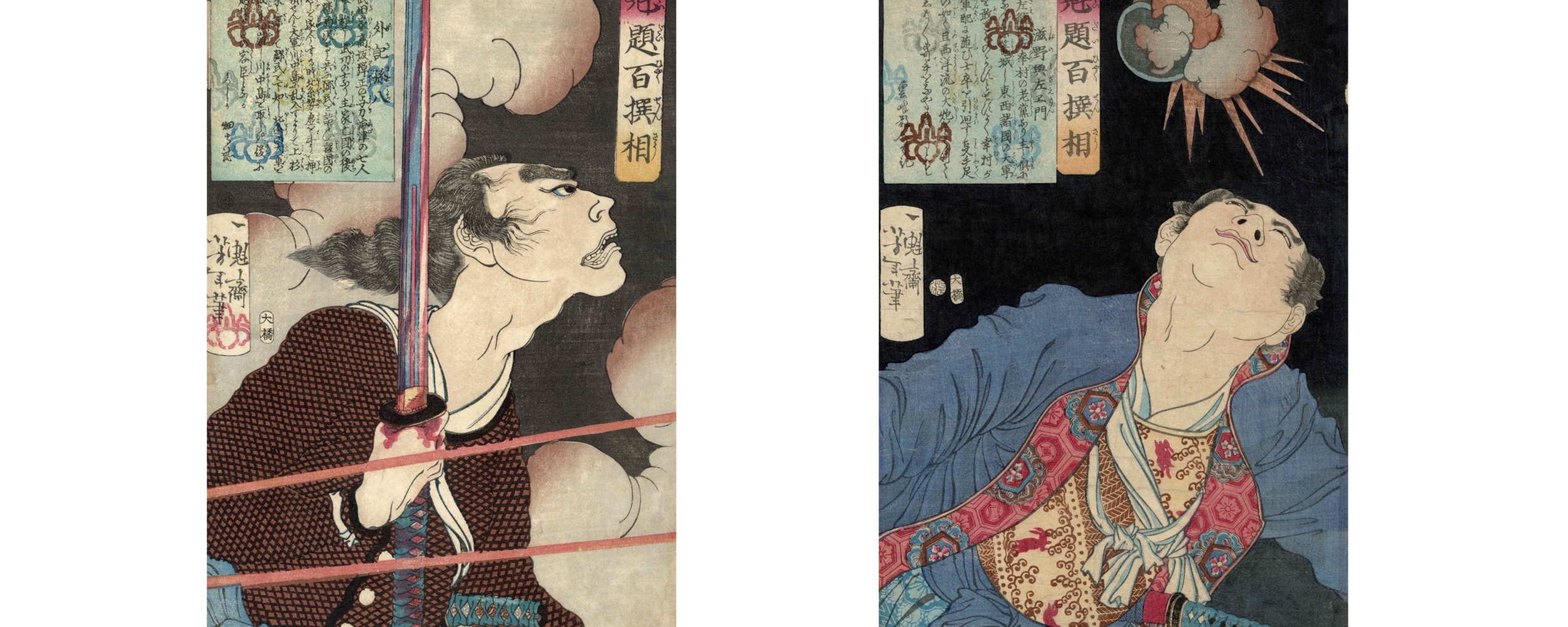
Tsukioka Yoshitoshi 月岡芳年 (1839–1892) L: Geki Magohachi ca. 1868–1869, SH2018-DM-129. R: Shige no Yozaemon, 1869, SH2018-DM-146. Japan Museum SieboldHuis Collection.
Catalogue
A richly illustrated catalogue will accompany this exhibition with essays by Jim Dwinger (junior curator), Kuniko Forrer (coordinator Netherlands-Japan relations), Daan Kok (curator Japan and Korea at World Museum Leiden) and foreword by director Kris Schiermeier.
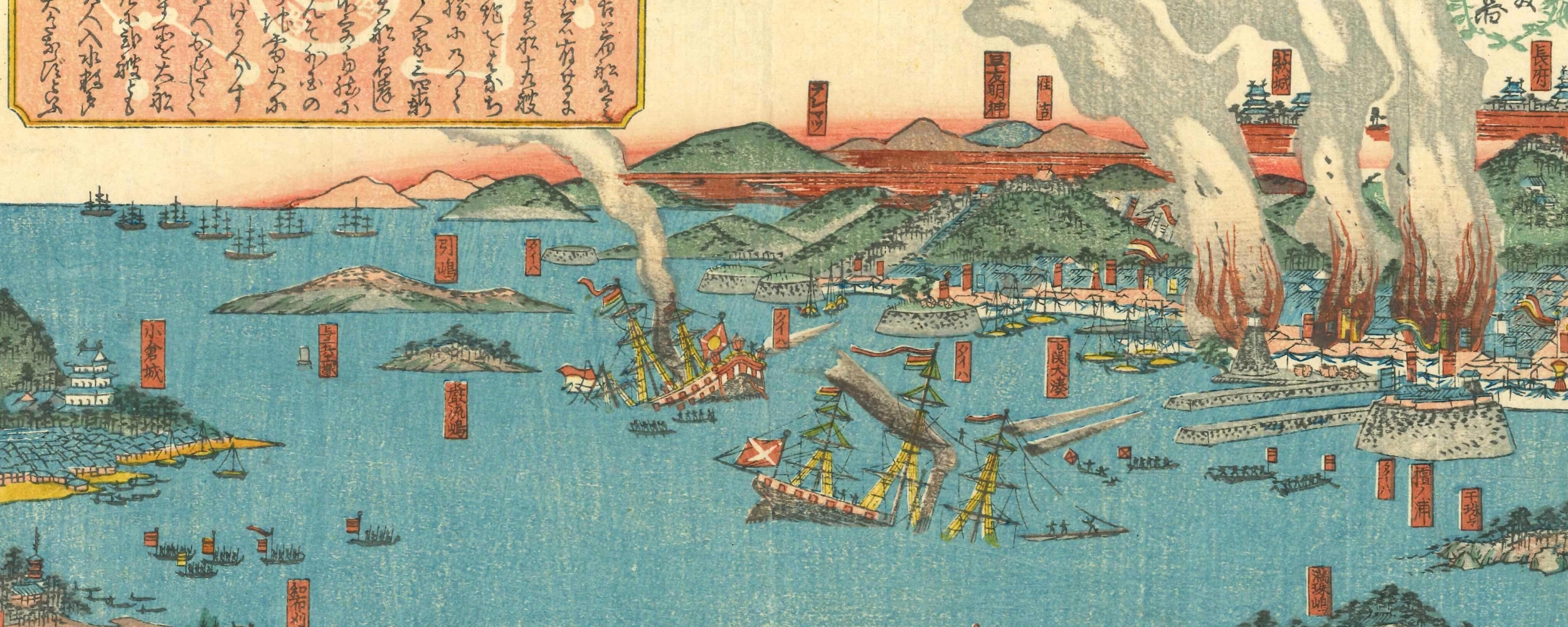
Artist unknown, Mongols retreat from a sea of fire (Mōko taisan ōkagari no zu), c. September 1864, SH2024-01. Japan Museum Siebold House Collection.


